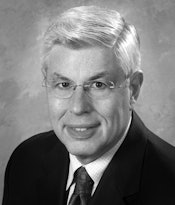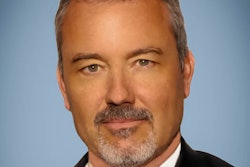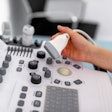
It's a good time for a radiologist to find work. There are 14% more new jobs available for radiologists in 2017 compared with 2016, according to the sixth annual workforce survey by the American College of Radiology's Commission on Human Resources.
The growth represents up to 2,370 new job openings for radiologists and shows a significant increase in available work since 2013, wrote a team led by Dr. Edward Bluth from the Ochsner Clinic Foundation in New Orleans in a paper published online July 29 in the Journal of the American College of Radiology.
These new jobs are available due to various factors, from the retirement of senior radiologists to an increase in part-timers, according to Bluth and colleagues.
"The improved outlook could be a harbinger of a possible shortage of adequately trained radiologists in the future," wrote the authors, adding that "an increasing number of radiologists are now working part time, and this has implications relative to maintaining an adequate workforce."
Doctor demographics
Bluth's team used the Practice of Radiology Environment Database to identify U.S. radiology practices eligible for the study. Of those invited, 477 responded, for a rate of 26%; the responses represent 11,056 radiologists, or 33% of all practicing radiologists in the U.S.
 Dr. Edward Bluth from the Ochsner Clinic Foundation.
Dr. Edward Bluth from the Ochsner Clinic Foundation.Participants were asked to report the number of radiologists currently employed in their practice, the number hired in 2016, and the number they plan to hire in 2017 and 2020. The survey also asked respondents to describe their organization type and to divide their departments between general and subspecialty radiology. Finally, the survey included questions regarding radiologists' gender and age distribution.
Most radiologists are in private practice (52%), while 23% work in academic or university environments, 13% in hospitals, 9% in multispecialty clinics, 3% in corporations, and less than 1% for the government. The bulk of radiologists work full time (84%); those who work part time fall along gender lines, with 10% of male radiologists working part time compared with 30% of female radiologists.
As for gender characteristics of the radiologist population, 21.5% of radiologists are women. Of those who are younger than 45, almost a third (27%) of the radiologists are female.
Most practice leaders are male, at 87%. Of all male radiologists, 15% are practice leaders, compared with 8% of all female radiologists.
"The results of this survey show that females are appropriately represented as leaders of their groups based on the current gender distribution of full-time radiologists," the authors wrote.
Of radiologists in the 56-to-65 age group, 80% work full time. This could lead to a radiologist shortage if this group decides to retire all at once, according to Bluth and colleagues.
"With the issue of burnout becoming more significant among radiologists than in the past, the possibility of increased retirement among senior radiologists is of real concern and must be monitored carefully," the team wrote.
More work
A similar number of radiologists were hired in 2016 compared with the year before: between 1,569 and 2,037, compared with 2015's range of 1,474 to 1,913. Those hired in 2016 were mostly first-time hires (57%), while 43% moved from another job; 95% of first-time hires had fellowship training, the researchers found.
Going forward, the number of available new jobs in 2017 will increase, ranging from 1,826 to 2,370. The largest percentage of hires will be subspecialists from neuroradiology (13%), general interventionists (12%), after-hours radiologists (12%), body imagers (11%), and breast imagers (10%), according to the report.
As for geography, most of the new positions will be in the South (27%) and Midwest (22%), while the fewest number of jobs will be in the New England (4%) and Mid-Atlantic (13%) regions. Most new positions will be in private practice (45%), followed by academic and university practices (31%), multispecialty clinics (12%), and hospitals or corporations (6%).
The authors estimated that 1,123 to 1,458 radiologists will be needed in 2020, although they acknowledged that predicting the job picture for three years out is challenging.
"We have learned ... that our predictions for three years forward are inaccurate in terms of the actual number of openings," they wrote. "Practice leaders seem unable to accurately project their needs that far in advance."
Optimistic picture?
In any case, overall, the survey findings paint an optimistic picture for radiologists seeking work, according to Bluth and colleagues.
"This year's projection is a significant improvement in job availability compared with the approximately 1,239 positions filled in 2011 and the only 1,069 positions that were available in 2013, the worst year for job seekers," they concluded.




















